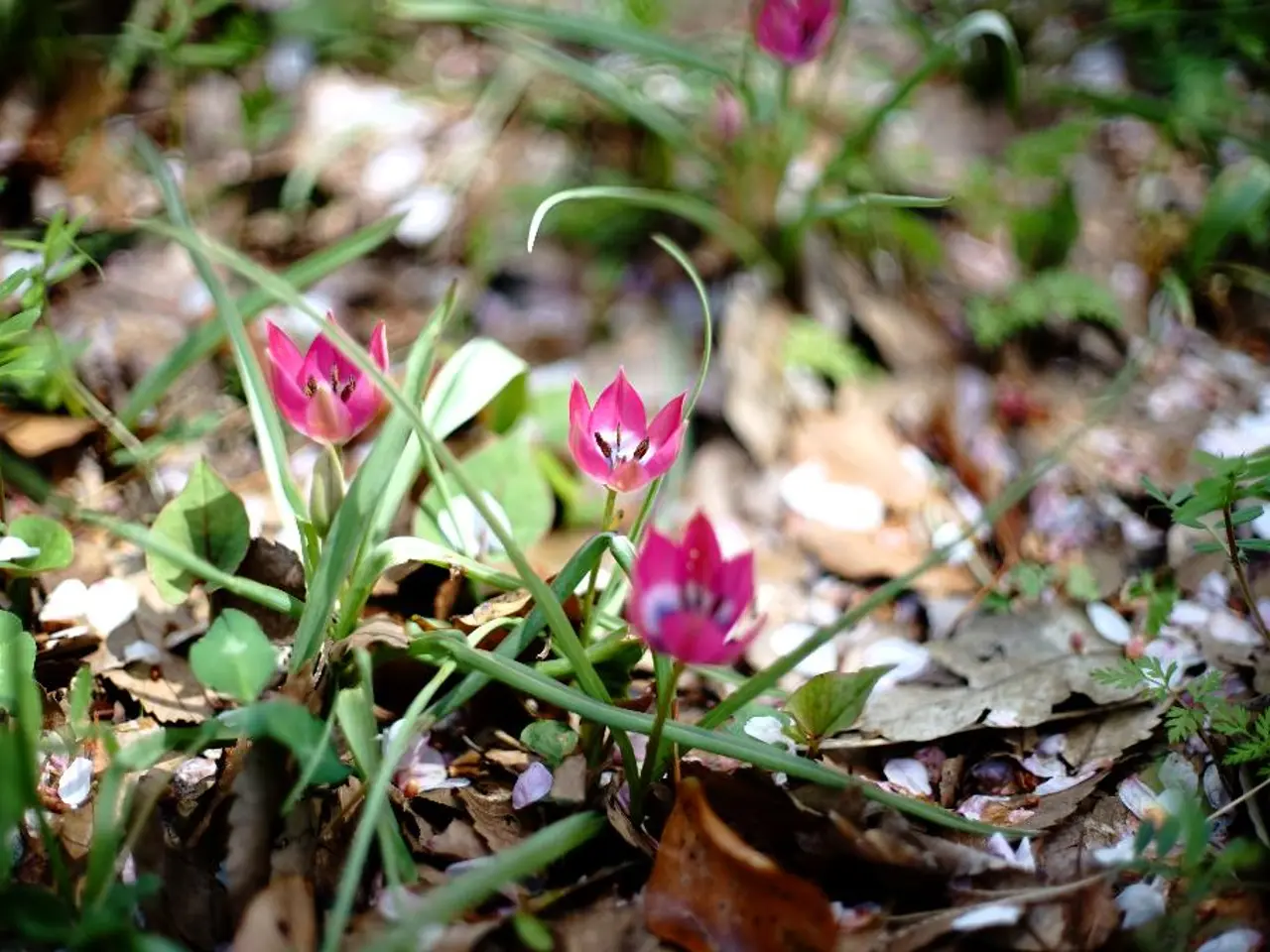Reviving Begonias' Popularity: A Guide on Deadheading for Persistent, Alluring Blooms
Maintaining the beauty and health of begonias, a popular garden favourite, is a straightforward task that involves regular deadheading. This practice not only enhances the plant's aesthetic appeal but also promotes continuous blooming and disease prevention.
**Deadheading Begonias: A Step-by-Step Guide**
1. Identify Spent Blooms: Look for flowers that have lost their vibrant hues and are turning brown or wilting. These are the ones you should focus on removing.
2. Choose the Right Tool: Soft stems can be pinched off using your fingers. For harder or woodier stems, use sterile scissors or garden shears to avoid damaging the plant.
3. Remove Entire Flower Stems: When cutting, ensure you remove the whole flower stem above the first set of leaves. This prevents leaving behind any stub that could rot.
4. Avoid Excessive Pruning: Only remove the spent flowers and avoid pinching too far down the stem, as this might remove new growth or developing buds.
5. Maintain Dry Conditions: Deadhead when the plant is dry to prevent fungal diseases that can occur if the stems or petals are wet.
**The Benefits of Deadheading Begonias**
- Aesthetic Appeal: Removing faded flowers keeps the plant looking vibrant and healthy, maintaining its visual appeal. - Prevention of Disease: Fungal diseases can spread from rotting flowers, so removing them prevents such issues. - Encourages Continuous Blooming: By removing spent flowers, begonias focus their energy on producing new blooms rather than seeds, ensuring continuous flowering.
By following these steps and maintaining a regular deadheading routine, you can encourage your begonias to bloom more prolifically and for a longer period.
**Caring for Your Begonias**
When begonias are actively growing, they should be fertilized once a month with bone meal, which offers a higher phosphorus content. It's essential to check the hardiness of the specific begonia you wish to grow in your yard to ensure it will thrive in your local climate. Begonias are hardy across US hardiness zone 6 to US hardiness zone 9.
In conclusion, deadheading begonias is a simple yet effective way to keep your garden looking beautiful and your begonias healthy. Regular deadheading not only prolongs the blooming season but also prevents wilted flowers, fungal diseases, and premature seed production. So, grab your pruning shears and get started on your deadheading journey today!
Since deadheading begonias encourages continuous blooming and prevents disease, it's also beneficial to incorporate this practice into your home-and-garden lifestyle, particularly when maintaining the garden section of your home-and-garden. Regularly deadheading the spent blooms of your begonias can be likened to gardening, as it helps to prune the plants and promote new growth.




